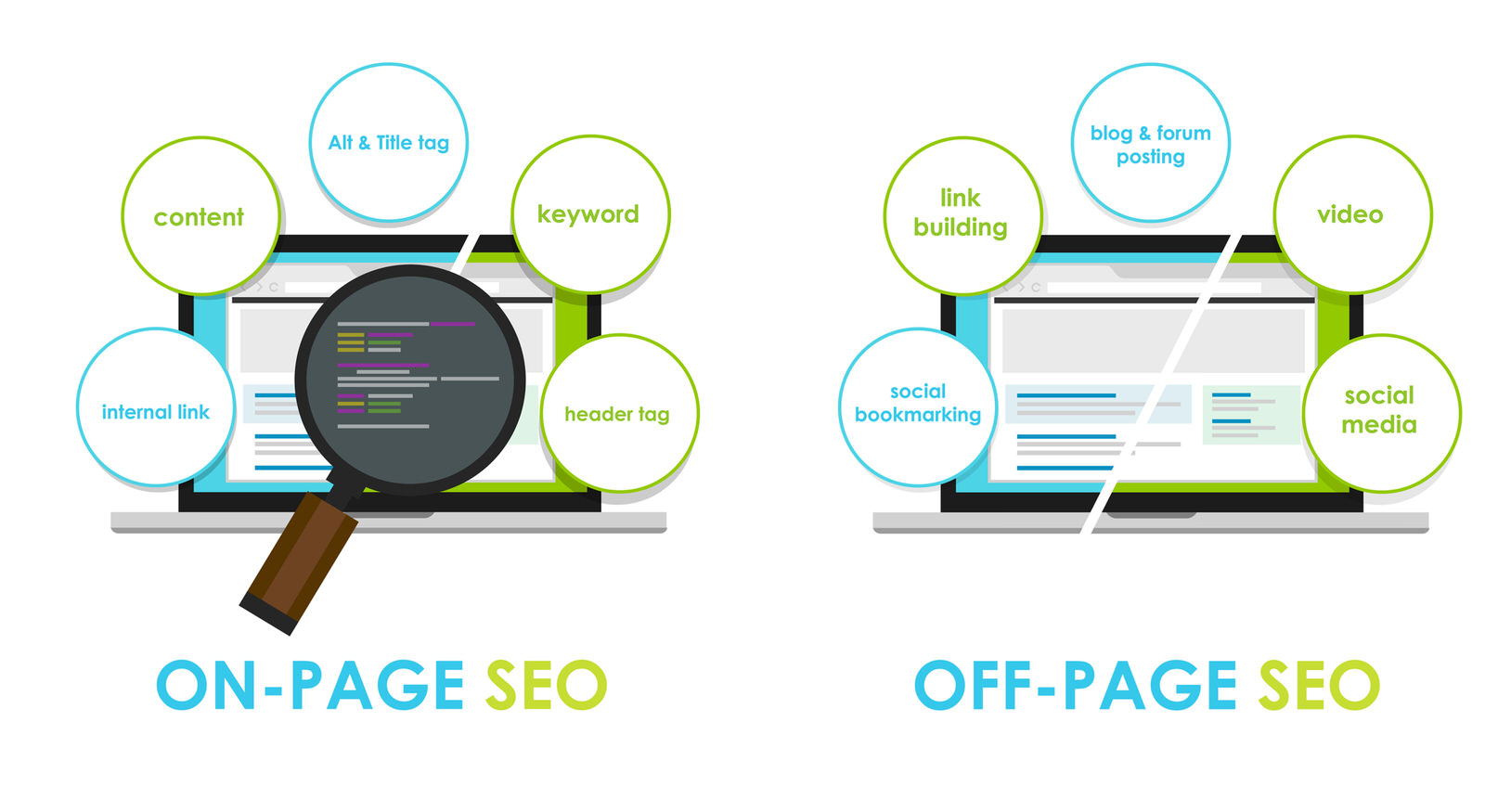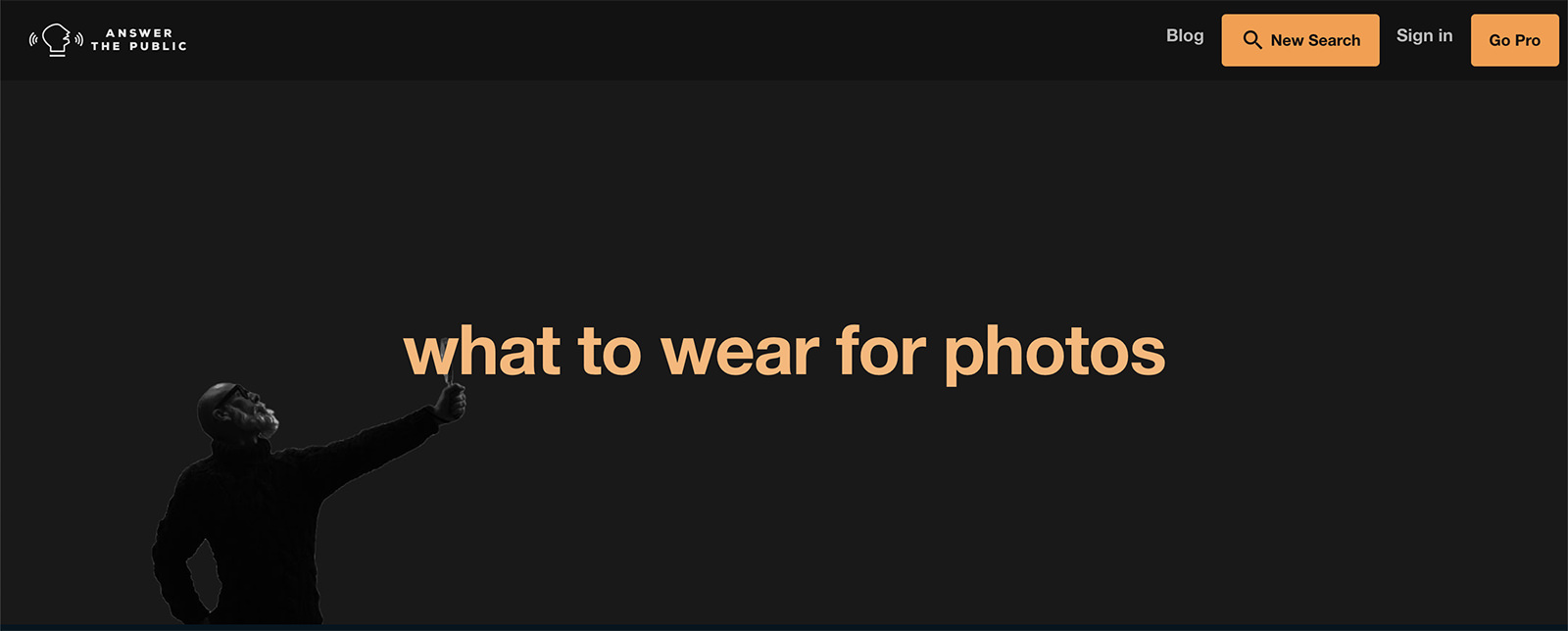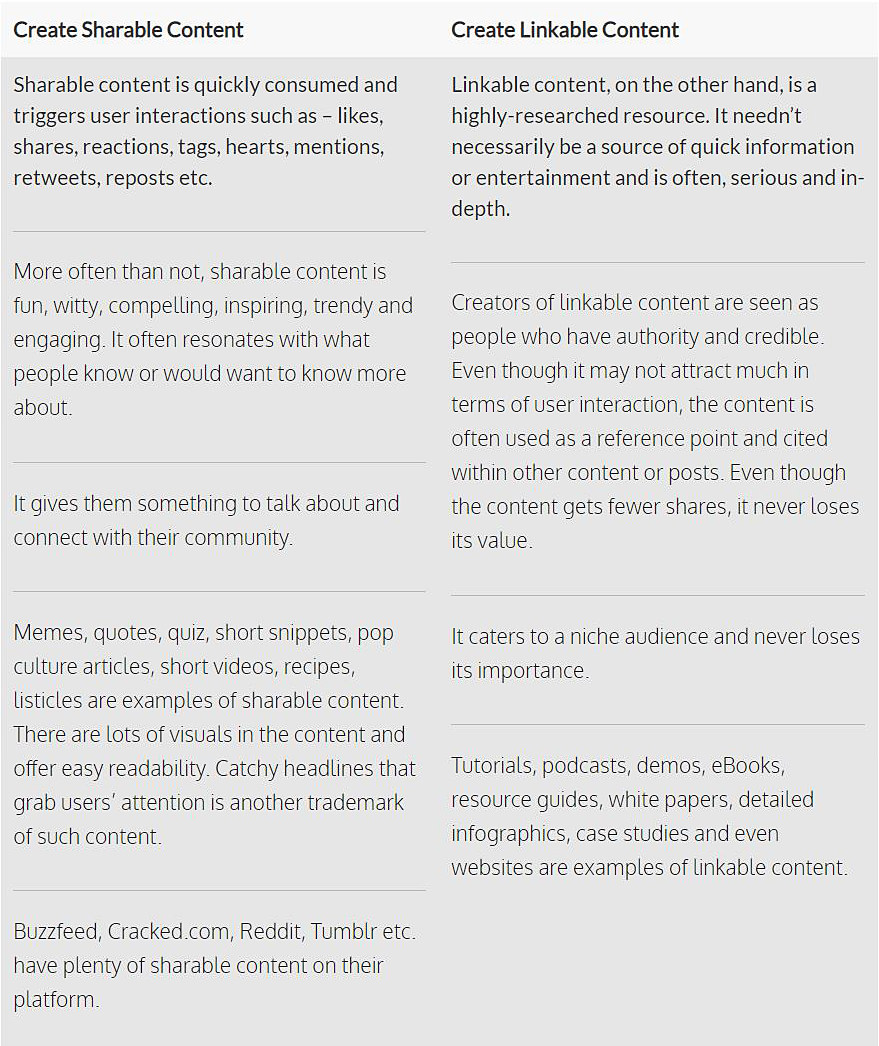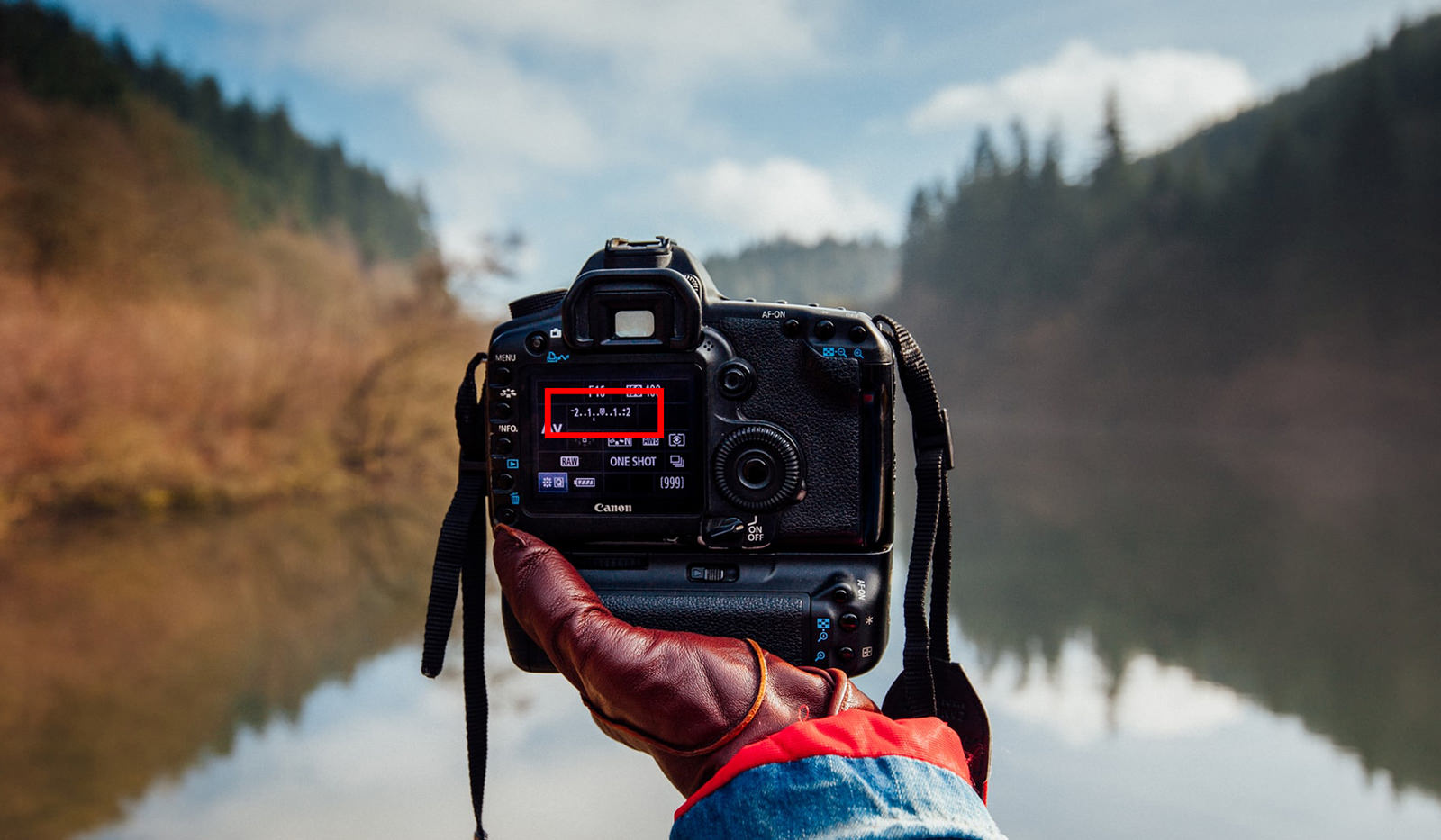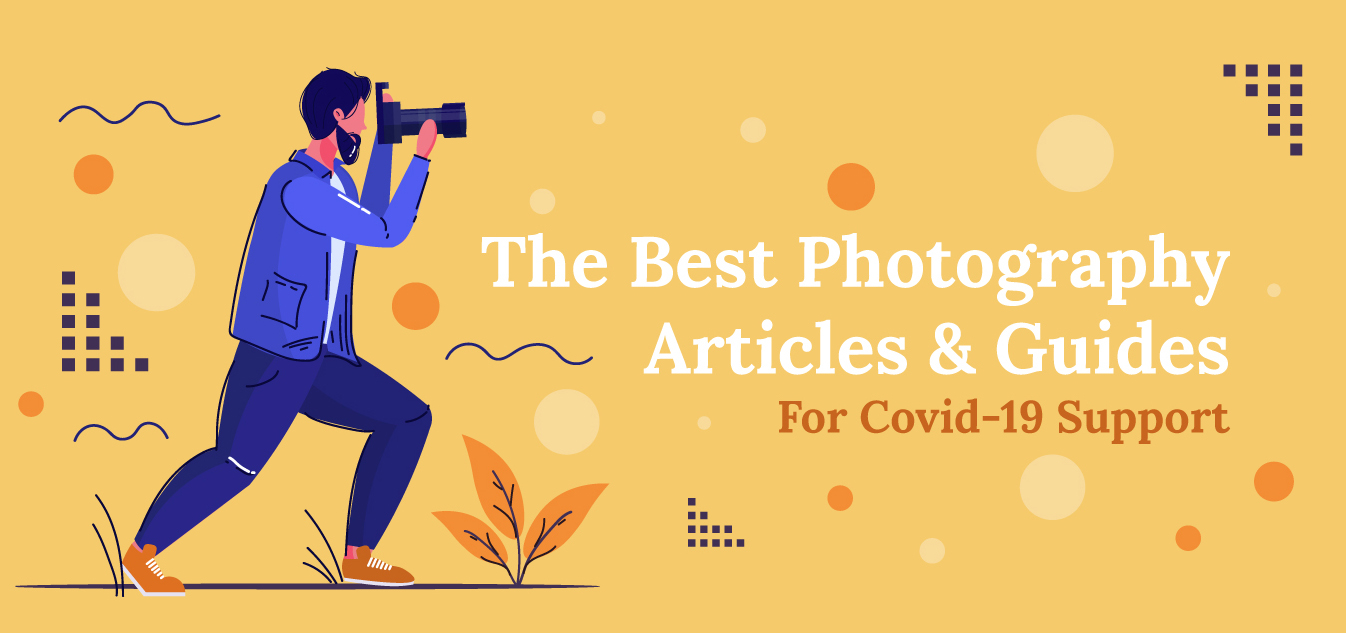
Content Creation and Link Building to Bring in More Photography Clients
When photographers hear “SEO” or “Search Engine Optimization,” they often think of keywords that are relevant to their business and where to put those keywords on their website. And while keywords are the backbone of how many of us search the internet, they are only part of how to optimize our business’ presence on the internet.
SEO is made up of many different factors – both on and off our websites. In fact, according to Moz.com, “off-site SEO-related factors likely carry more than 50 percent of the ranking factor weight.” We touched on on-site and off-site SEO factors in our Basics of Search Engines article. But what Moz means, in plain English, is that the things we do on our website to optimize for search engines is only half of the story! The other half is made up of signals that other sites are sending to search engines about our website.
Today we are going to talk about two things that include both on- and off-page factors for your digital marketing strategy: link building and content creation. Because while it’s easy to think about them as separate, they have a very symbiotic relationship that tie them closely together. When used properly, they are amazing tools to help begin building trust with future customers and creating a community online around your business!
A Primer – On-Page vs Off-Page SEO
Before we dive into content creation and link building, let’s do a small refresher on on-page versus off-page SEO.
When I say on-page SEO, I am talking about things like:
- Relevant keywords in your page title, meta description and body copy
- Page URL structure
- In-depth, unique and user-friendly content
- Page speed
- Mobile friendliness
- Internal and external links
When I mention off-page SEO, I am referring to things like:
- Links from other websites to your site and content (also known as backlinks)
- Your content being shared on social media
- Your social media profile links
- Links to your site in the author box on guest posts
- Mentions of your brand name
- Comments made by you on other blogs
Notice that links are mentioned for both on-site and off-site SEO? When we talk about on-site SEO, we are talking about links on your pages to other content on your site or to relevant links elsewhere on the internet. When we are thinking about off-site SEO, we are talking about external links pointing back to you site.
So when you link to someone else’s content, not only are you helping inform your website users about useful content they might enjoy, but you are also helping to improve the SEO of the site where the link lives. This is why we talk about content creation and link building together!
Content
We are going to dive into content first because it is an incredibly important component to your SEO strategy. Not only is the quality of your content a ranking factor for your website, but without quality content it would be near-impossible to build a solid backlink portfolio. So let’s talk about what content means for your website and how you can use it to improve your site’s search engine presence.
Before we go any further, content can mean:
- Blog posts or articles
- eBooks
- Tutorials
- Videos
- Audio recordings
- Infographics or other visuals
According to Moz, quality content has two main components. It supplies a demand and it is linkable (see I told you there was a symbiotic relationship!). So let’s unpack what both of those statements mean so that you can apply them to your website strategy.
Content That Supplies a Demand
In any business, if you have a product for which there is no demand, you essentially have a useless product. As photographers, we already know that there is a demand for our service. When we create our content, we need to think about what demand there might be at various stages of the customer journey or buying cycle.
Once you have your ideal client and their customer journey firmly in mind, it becomes a great deal easier to think about what their questions and concerns might be when thinking about, researching, booking and planning a photoshoot. For example, in the post-booking stage most people are incredibly nervous about having a photoshoot. Creating content to help ease their nerves and empower them with tips on how to relax and pose for the camera can help supply a demand.
Brainstorm about your past clients. Or, even better, invite them to chat with you. Ask them what their questions and concerns were before they decided to search for a photographer, during their search and when booking. Their answers are content gold.
There are plenty of tools out there to help you see what kinds of queries people make in search engines. Here is a great list of 28 tools to help you find out what people search for. One of my favorite tools they mention is AnswerThePublic. With the free version, you can input a query and it will return variations that could inspire your content strategy.
One of the biggest questions I get asked after clients book is what they should wear to their session. So I made a wardrobe guide that I send out to every client after they have signed their contract. Using AnswerThePublic, I decided to see what other kinds of content a photographer might want to create based on queries about what to wear to a photoshoot:
The results did not disappoint! My research came up with 317 results. Some of them ended up being duplicates, but there were still plenty of queries to choose from. Depending on your ideal client and the types of sessions you offer, AnswerThePublic came up with a lot of questions that could be answered by your content:
- what to wear for beach photos
- what to wear for boudoir photos
- what to wear for breastfeeding photos
- what to wear for business photos
- what to wear for baby photos
- what to wear for author photo
- what to wear for anniversary photo shoot
- what to wear for family photos
- what to wear for fall photos
- what to wear for family photos outside fall
- what to wear for family photos in studio
- what to wear for family photos outside summer
- what to wear for engagement photos
- what to wear for engagement photos outdoors
- what to wear for engagement photos fall
- what to wear for engagement photos summer
- what to wear for engagement photos winter
If you were to do this for every question or concern that your potential clients have, you could come up with a near-endless idea list for your content!
Now it’s your turn. Take a few moments to do some research on any of the following hot topics that might be relevant to your business. Put them through one of the search tools like AnswerThePublic and see if you can come up with some creative content ideas for your business:
- Ideas and tips for preparing for a portrait session
- Wardrobe, hair or makeup ideas for high school seniors
- Why your clients need wall prints in their lives
- Instructional “how to” articles that relate to your business offerings
Content That Is Linkable
Moz also indicated that good content is linkable. They give a few examples of content that cannot be linked to: AJAX-powered (a type of programming language) image slide shows, content only accessible after logging in and content that can’t be reproduced or shared. So when they refer to linkable content, they mean assets that can actually have traffic sent to them.
However, if you do a web search for linkable content, you will find a definition that is broader. Most of the time, linkable content is synonymous with link-worthy content. This is important to keep in mind because the content that is considered link-worthy is going to be content that goes beyond simply supplying a demand.
Let’s think about this in the context of a service provider like a hairdresser. Some hairdressers provide a basic service, while others go above and beyond to make sure that their clients look and feel their best.
Which one do you think will have clients who refer their friends and acquaintances more often? You can be sure that those latter service providers are going to be the ones that develop the broader referral network and are going to be booked more often. Our content needs to be like the amazing hairdresser that goes above and beyond and gets client referrals.
The late Eric Ward, a pioneer in link building, said it best when he stated,
“The less useful your content, the less likely you are to ever receive a link to it.”
The book Contagious by Jonah Berger explores the fact that people tend to share things based on a certain set of psychological triggers. According to the book, people tend to share things that:
- Help make them look good
- This can be anything from helping them look good in a photograph to helping them back up a point they want to make
- Make them feel an emotion
- This is where you could inspire you potential clients or make them laugh!
- Are attached to a current event or news story
- Offer a practical value
- This is where content you create to help educate your client falls
- Have already been shared or linked to by others
Above all, remember that your content must make an impact for the intended reader or viewer.
Many photographers have focused a lot of energy on trying to crack the code on going viral. And while there’s absolutely nothing wrong with having a passion project go viral, I want to take a moment to share this useful chart from Duct Tape Marketing. It helps us understand the difference between content that is shareable and content that is linkable. (In fact, the chart itself is linkable content!)
Remember, there is nothing wrong with creating shareable content. It can still help you earn links and traffic to your site. However, it might have a shorter shelf life than linkable content that has an evergreen client-based focus.
Does All of Your Content Have to Be Linkable?
The simple answer is no. Some of your content will serve a demand from your market, but not be linkable in the sense of being link-worthy. You shouldn’t feel a sense of pressure to make every single blog post on your website linkable in the grand sense. Your main focus should be to create content that answers the demand of your market. If you have already created content that you feel answers the needs of your market fully, then you can focus on ways to improve that content to make it more linkable.
Link Building
Now that we have discussed the amazing linkable content that you are going to create for your site, it’s time to think about getting some links to it. Some links are better than others. For example, a link to your website from a popular industry blog is link-gold. This is essentially a high-level vote of confidence about your website to a search engine.
Getting a link from a news site is great too, but having the content of the linking site be relevant to yours is going to help more. Putting your website in a blog comment might have some value, but probably not a lot of SEO punch. Let’s delve into the value of some of these links:
Dofollow vs Nofollow Links
Once upon a time, leaving a comment with a link back to your own website on other people’s blogs was a fast and effective way to get new backlinks. But these days are long over. This is because some links, like comments on many blogs, are called nofollow links. In fact, Google created nofollow links specifically to combat link spam in blog comments.
Have you ever gotten a comment like this in your blog?
Not only is this comment pretty spammy, but I wouldn’t click on a link like that if I were you. The reason that this person had commented with this link is to attempt to improve their own off-site SEO with a backlink. However, because the blog this comment came from is set to have links be nofollow, no authority is being passed to the commenter and their effort is essentially wasted.
Usually you won’t be able to tell the difference between a do-follow and a no-follow link unless you investigate the source code of each link. When I look at the code for the above comment, this is where I am able to see that it is nofollow:
That little bit of added code rel=”nofollow” is what tells the search engines not to pass any authority onto the link. In the below example, the top link is a dofollow link. In the bottom example, by adding a little bit of code, it has become a nofollow link:
When you’re doing future research on places where you might be able to get a link back to your site, knowing which opportunities offer a dofollow versus a nofollow link can help you be more strategic in your approach. If you’re overwhelmed with the idea of looking at source codes of websites, worry not! You can just use the “Strike Out Nofollow Links” Chrome extension.
Is Commenting on Blogs Worth Your Time?
You’re probably thinking, “Why would I bother with commenting on blogs now that you’ve told me about this nofollow thing?” And the answer is that commenting on blogs is about building relationships and community around your business. Do you comment on other Instagram or Facebook accounts? Of course! Because it helps build community.
While not directly related to an SEO effort, commenting on a popular blog, while not getting you a dofollow link, could create the basis of a community relationship. That relationship could lead to a feature, guest post or interview in the future. So even if blog comments are nofollow links, they can be worth your time! The important thing to remember when thinking about your off-site link building strategy is to focus on higher impact activities.
Being Strategic in Your Link Building
Now that you know the difference between dofollow and nofollow links, let’s talk more in-depth about how to go about creating a link building strategy for your business.
There are several different ways to go about getting links to your website:
1. Create Great Content to Attract Links
The best way, as we have already discussed, is to create useful and linkable content. It is the foundation of a healthy backlink portfolio. The more useful your content is to your target audience, the more worthwhile your content is and the more likely it is to be linked to.
If You Build It, Will They Come?
Many people have this belief that “if you build it, they will come.” But just like the Kevin Costner film, Field of Dreams, that concept (and my reference) is getting pretty dated. In the world of SEO, you can’t simply create a piece of content and hope that you will attract amazing links to your site.
You will still have to find ways to promote your content in the beginning to help it get traction. This means sharing your content on social media and finding outlets that your target audience frequents that might be interested in linking to your work.
How to Ask for Backlinks
Sometimes the best way to get a backlink to your site is to ask for it. If you’ve created an awesome piece of content that puts a unique spin on an in-demand subject, there are plenty of outlets in the industry that will want to link to it or feature it. They just need to know about it first.
So once you have created your awesome piece of content, you need to find a few relevant outlets for your audience. Search through them to find posts that are relevant to your content topic. Review the other site’s piece to see what it might benefit from and ask yourself what is the perspective of your content. Maybe your content is an in-depth explanation of one of the points made in the site’s piece. Remember those psychological triggers we talked about? Everyone likes to have something that backs up their point!
From here, there are two ways that you could go. The first is to take some time and build a relationship. This means engaging with the outlet on social media and, you guessed it, commenting on their blog! The benefit of this method is that you’re not doing cold outreach, so you might be received a little more easily. The downside, however, is that it takes longer.
The second method is to take the information about how your content could benefit another site and immediately do outreach with it. This can be especially beneficial if your content is topical and time sensitive. But the people who operate larger websites and popular blogs often get a lot of outreach every day from strangers. So you’ll have a harder time standing out without a relationship being built first. The thing to remember is to make it about them and their audience, not about you. Here’s an idea of how to word your initial outreach email:
Hello there {insert blog or website owner’s name here},
I wanted to reach out to let you know that I really enjoyed your post, {post title here or topic here}. What I appreciated about it most was that {insert something unique about the piece here}.
I actually created a {insert type of content here} that {does a deep dive/takes a new approach/help support your point, etc}. If you’re interested in checking it out, here is the link: {insert link}.
If you think this would be useful to your audience please let me know!
Thanks so much for your time and consideration.
Best,
{Your name here}
Pro Tip: Reverse Engineer the Process
While you’re researching outlets to do outreach with, check out the content that they’re already linking to. We talked about using what Brian Dean at Backlinko calls the “skyscraper technique” in another post. The long and short of it is to see what other content is popular or being linked to and find ways to improve upon it and make it your own. You can use this technique as a way to inspire other content for your link building strategy!
2. Guest Blog
Another way to get solid links pointing back to your site, and to help develop relationships with higher level websites, is to offer to guest blog. Not only does this help to establish you as a leader on websites that your target audience frequents, but usually guest blogs will link back to your website in the author section of the post.
Guest blogging for industry websites and professional organizations can be a really powerful strategy as well. While these won’t likely be sites that your target audience often visits, the SEO benefit of having them in your backlink portfolio shouldn’t be ignored.
3. Get Video and Social Backlinks
Do you have a YouTube channel, Facebook page or Instagram account? I bet you do! The power of a link in your social media accounts shouldn’t be ignored. They do not have the same ranking weight as a backlink in a high powered industry blog, but they still help to send signals to search engines.
4. Consider Link Directories
In past articles, we’ve talked about buying links. It used to be considered best practice and entire “link farm” industries sprang up. Today, this practice is considered taboo and Google condemns it in their Webmaster Guidelines. So just like buying likes and followers on social media can have negative consequences, so can buying links.
Unfortunately, these link farms of old have given link directories a bad name. But there are totally reputable ones out there. Your local chamber of commerce probably operates one. The Better Business Bureau is another. There are also industry specific link directories. Some will require a fee to be included, so you will need to decide if the fee is worth the link.
Wrapping It Up
As we’ve been discussing in our series, SEO is so much more about creating for your customers than it is about creating specifically for search engines. Even search engines know this! This is why over half of the ranking factor weight for your site comes from off-site factors. In this online world, it is about understanding who your customer and your community is, then developing relationships that serve both.
So as you approach both content creation and your link building strategy, remember to keep the community-focus front and center. SEO, and business in general, is a long game. We invest up front in order to reap rewards in the future, which means that we don’t churn out blog posts in a vacuum or send out generic outreach emails to other websites. Once you have taken the time to understand your client, their hopes and their dreams, and find ways that your business supports and serves them, creating content for them becomes that much easier. When you know your clients and what they need, doing outreach and finding places to get your links placed is easier too!
